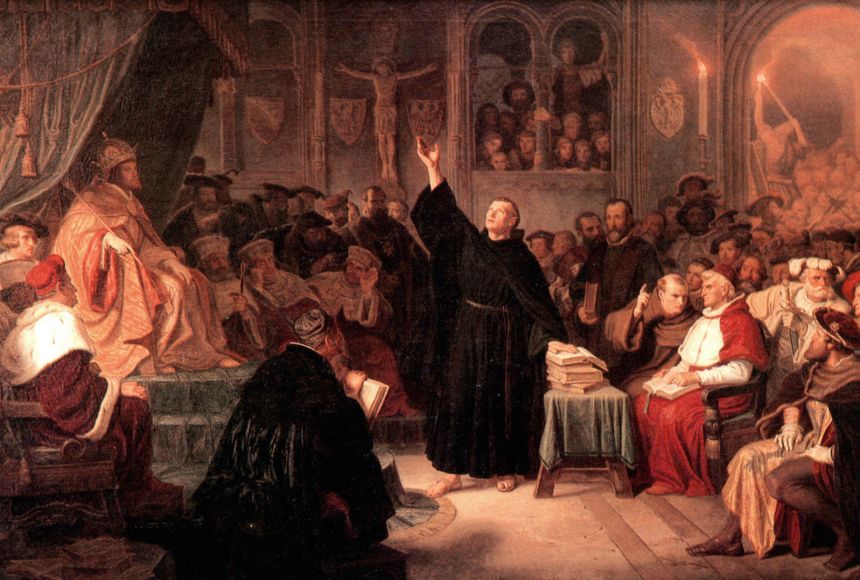ARTICLE
leveledARTICLE
The Protestant Reformation
The Protestant Reformation
The Protestant Reformation that began with Martin Luther in 1517 played a key role in the development of the North American colonies and the eventual United States.
Grades
3, 5, 7, 9 - 12
Subjects
Religion, Social Studies, Civics, U.S. History, World History
Image
Martin Luther at the Diet of Worms 1521
Martin Luther, a German teacher and a monk, brought about the Protestant Reformation when he challenged the Catholic Church's teachings starting in 1517.
Photograph of painting by World History Archive/Alamy Stock Photo

Media Credits
The audio, illustrations, photos, and videos are credited beneath the media asset, except for promotional images, which generally link to another page that contains the media credit. The Rights Holder for media is the person or group credited.
Director
Author
Production Managers
Program Specialists
Producer
other
Last Updated
October 19, 2023
For information on user permissions, please read our Terms of Service. If you have questions about how to cite anything on our website in your project or classroom presentation, please contact your teacher. They will best know the preferred format. When you reach out to them, you will need the page title, URL, and the date you accessed the resource.
Media
If a media asset is downloadable, a download button appears in the corner of the media viewer. If no button appears, you cannot download or save the media.
Text
Text on this page is printable and can be used according to our Terms of Service.
Interactives
Any interactives on this page can only be played while you are visiting our website. You cannot download interactives.
